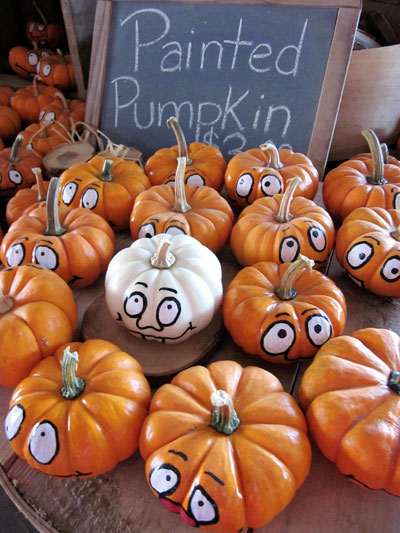Pumpkin primer
“I would rather sit on a pumpkin, and have it all to myself, than be crowded on a velvet cushion.”
Henry David Thoreau. Walden
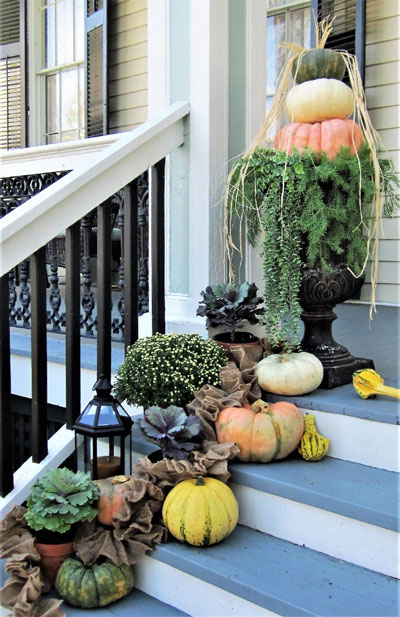
It’s hard to say how a pumpkin ended up in the musings of Henry David Thoreau. Despite speculation, we’ll probably never know for sure. But there is one thing regarding Thoreau and pumpkins you can bet on. The mid-1800s naturalist would marvel at the array of colorful and curiously-shaped pumpkins found at today’s farmers markets, pumpkin patches, local nurseries, and public gardens.

Pumpkins of every size, color, and shape fill bins, overflow from boxes, spill from wheelbarrows, and form pyramids on beds of hay. Colors range from ghostly white to flame red. Textures are as smooth as slime and as wart-covered as witches. Some pumpkins resemble cheese wheels; others look like turbans. The smallest pumpkins, like tiny gremlins, fit in the palm of your hand; growers truck the largest pumpkins to county fairs. There, officials hoist the one-ton jumbos onto scales, and award ribbons and bragging rights to proud growers.
Pumpkin profiles
Whether you want to decorate a porch, bake pumpkin bread, carve a Jack-o’-lantern, design a centerpiece, or keep kids busy with pumpkin painting, there’s a pumpkin for the job. Qualities to consider include color, size, shape, texture, ribbing, carvability, and flavor.
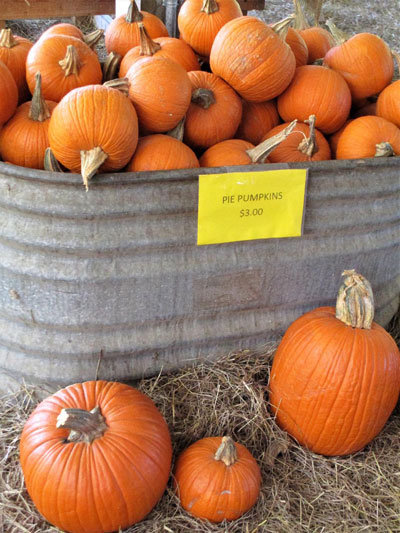
Classic orange pumpkins. Standard round, mid-sized pumpkins. Paint them, carve them, display them, or cook them. There are hundreds of varieties including Autumn Gold, Harvest Moon, and Jack-o’-Lantern.
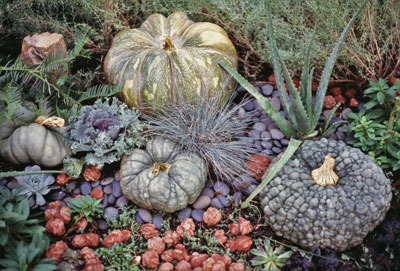
Blue pumpkins. Make the most of their ghostly appearance by displaying them alongside their orange cousins. Jarrahdale is a pale bluish-gray, deeply-ribbed Australian heirloom variety. Its flattened shape adds to its popularity. Blue Lakota, another heirloom variety, hails from the Midwest.
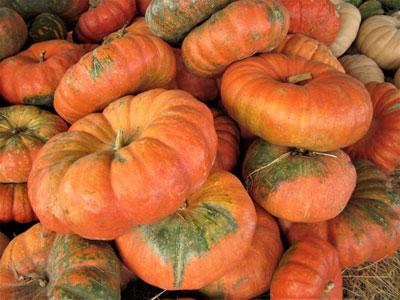
Red-orange pumpkins. Cinderella is a reddish, deeply-ribbed pumpkin prized for its whimsical cheese-wheel shape and sweet “pumpkin pie” flavor. For displays, stack the 12-15 pound fruits atop one another. Lakota, a pear-shaped, 5-to-7 pound pumpkin, boasts green and black markings on a reddish rind. It tastes like butternut squash.
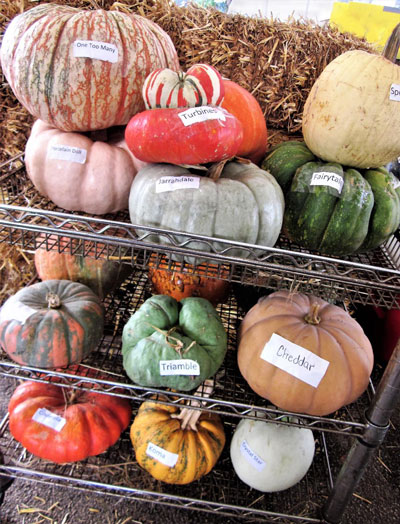
White pumpkins. The ever-popular “ghost pumpkins” have milky white complexions. Lumina’s smooth, snow-white rind overshadows its short shelf life. Casper is slightly ribbed and has great pie flavor. Enchanted flaunts a creamy white skin and flattened shape.
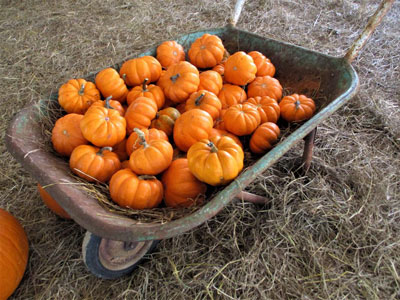
Miniature pumpkins. Use these tiny beauties for small space decorating and kids’ painting projects. Baby Boo is a white variety with deep ribbing. Jack-be-Little, Munchkin, and Sweetie Pie are orange. Tiger is yellow with orange blotches.

Warty pumpkins. Nothing says “Halloween” louder than wart-covered pumpkins. Kid-pleasing varieties include Knuckle Head, a deeply-ribbed pumpkin with more yellow, orange, and green warts than you can count. Other sinister-looking varieties include Warty Goblin, a bright orange, oval-shaped pumpkin and Galeux d’Eysines, an eerie, salmon-pink selection.
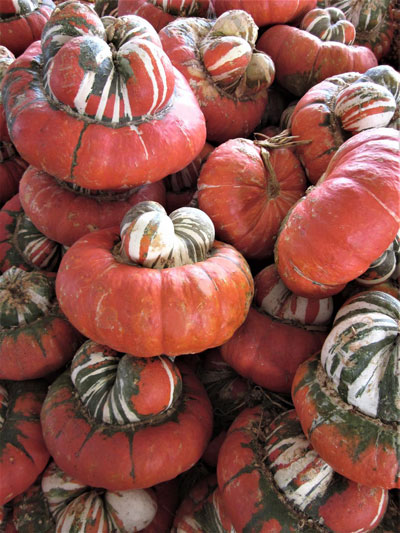
Turbans. These attention-grabbing squash use their turban shape, bright orange rind, and green-and-white mottled markings to steal the show.
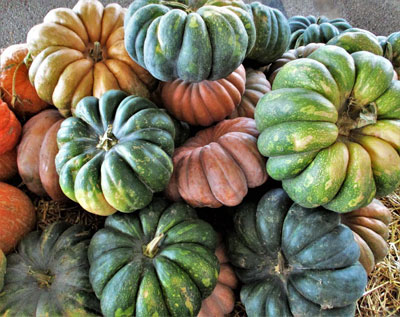
Giant pumpkins. Harvesting a huge pumpkin is the goal with Big Max, Dill’s Atlantic Giant, and Prizewinner. The current giant pumpkin record holder weighed in at over 2,300 pounds. Good luck!
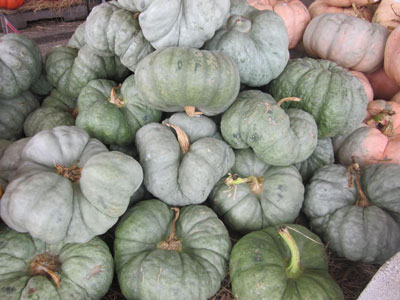
While most of us would rather display, carve, or cook a pumpkin than sit on it, I can’t help but wonder if solitude-seeking Henry David Thoreau wouldn’t have enjoyed grabbing a carving tool, a paintbrush, or even a fork and joining in the fun!
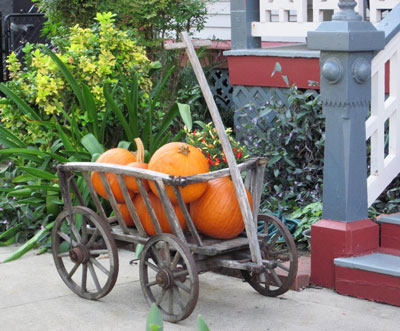
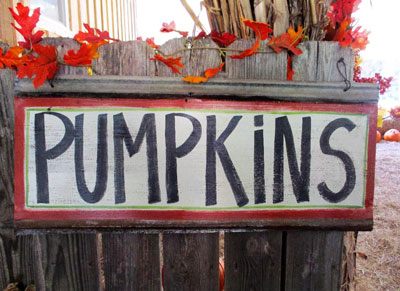
Sidebar:
Pumpkin facts
–Pumpkins number among the first domesticated crops grown in North America.
–Botanically, pumpkins are winter squash derived from the genus Cucurbita.
–All pumpkin parts are edible: skin, leaves, flowers, pulp, and seeds.
–Orange carotenoid pigments account for the color.
–Pumpkins are rich in Vitamin A, Vitamin C, and fiber.
–“New England’s Rarities Discovered” featured a pumpkin recipe in the early 1870s.
–The word pumpkin comes from pepon, a Greek word meaning “large melon”. The French adapted the word to pompon; the British changed it to pumpion. To American colonists, the native fruit was known as we know it today—pumpkin.
